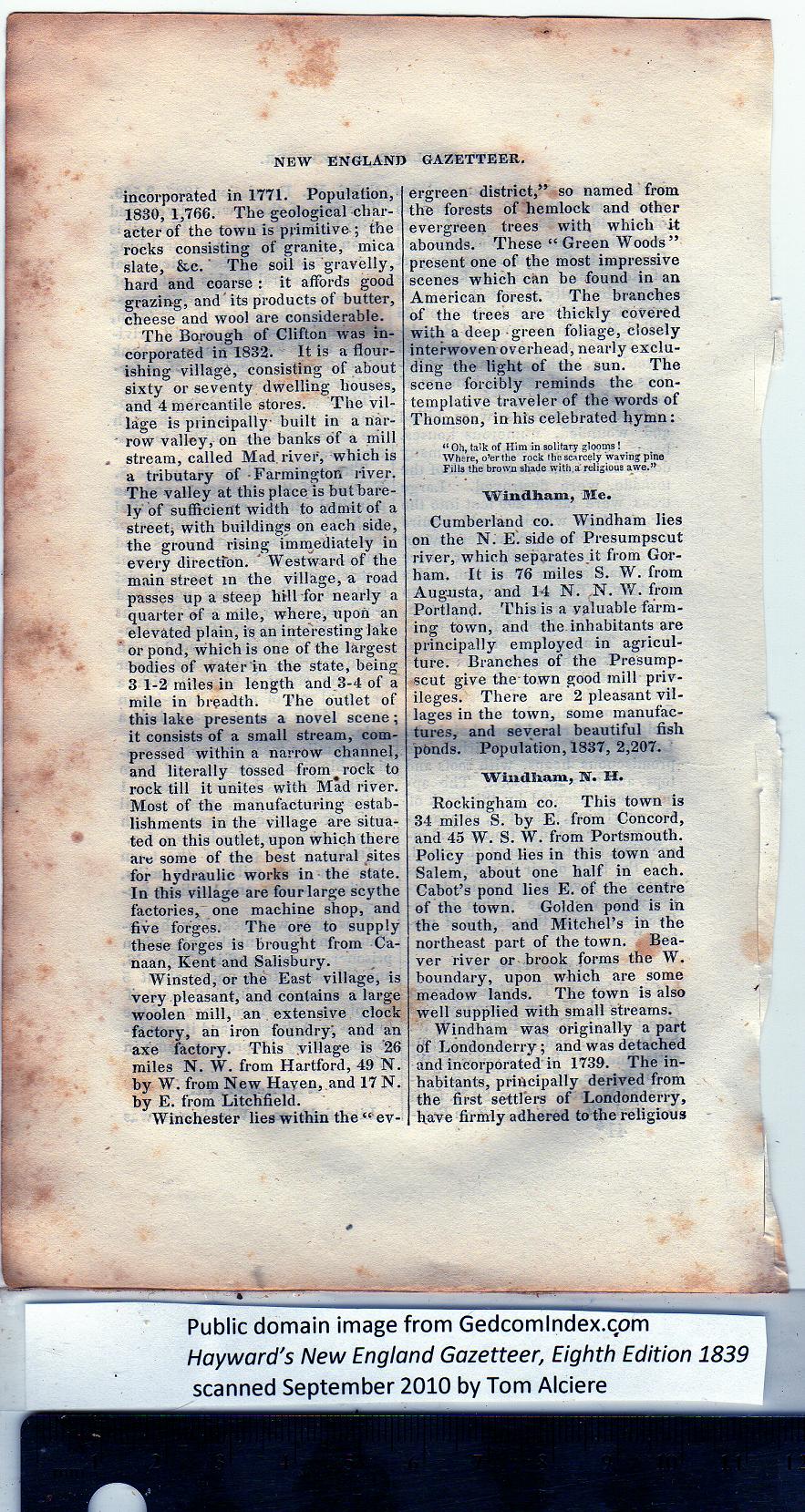|
incorporated in 1771. Population,
1830, 1,766. The geological char-
acter of the town is primitive ; the
rocks consisting of granite, mica
slate, &c.' The soil is gravelly,
hard and coarse : it affords good
grazing, and ’ its products of butter,
cheese and wool are considerable.
The Borough of Clifton was in-
corporated in 1832. It is a flour-
ishing village, consisting of about
sixty or seventy dwelling bouses,
and 4 mercantile stores. The vil-
lage is principally built in a nar-
row valley, on the banks of a mill
stream, called Mad river, which is
a tributary of Farmington river.
The valley at this place is but bare-
ly of sufficient width to admit of a
street* with buildings on each side,
the ground rising immediately in
every direction. ’ Westward of the
main street in the village, a road
passes up a steep hill for nearly a
quarter of a mile, where, upon an
elevated plain, is an interesting lake
or pond, which is one of the largest
bodies of water in the state, being
3 1-2 miles in length and 3-4 of a
mile in breadth. The outlet of
this lake presents a novel scene;
it consists of a small stream, com-
pressed within a narrow channel,
and literally tossed from rock to
rock till it unites with Mad river.
Most of the manufacturing estab-
lishments in the village are situa-
ted on this outlet, upon which there
arc some of the best natural sites
for hydraulic works in the state.
In this village are four large scythe
factories, one machine shop, and
five forges. The ore to supply
these forges is brought from Ca-
naan, Kent and Salisbury.
Winsted, or the East village, is
very pleasant, and contains a large
woolen mill, an extensive clock
factory, an iron foundry', and an
axe factory. This village is 26
miles N. W. from Hartford, 49 N.
by W. from New Haven, and 17 N.
by E. from Litchfield. |
Winchester lies within the “ ev-
ergreen district,” so named from
the forests of hemlock and other
evergreen trees with which it
abounds. These “ Green Woods ”
present one of the most impressive
scenes which can be found in an
American forest. The branches
of the trees are thickly covered
with a deep green foliage, closely
interwoven overhead, nearly exclu-
ding the light of the sun. The
scene forcibly reminds the con-
templative traveler of the words of
Thomson, in his celebrated hymn:
“ Oh, talk of Him in solitary glooms!
Where, o’er the rock thescarcely waving pine
Fills the brown shade with a religious awe.”
Windham, Me.
Cumberland co. Windham lies
on the N. E. side of Presumpscut
river, which separates.it from Gor-
ham. It is 76 miles S. W. from
Augusta, and 14 N. N. W. from
Portland. This is a valuable farm-
ing town, and the inhabitants are
principally employed in agricul-
ture. Branches of the Presump-
scut give the-town good mill priv-
ileges. There are 2 pleasant vil-
lages in the town, some manufac-
tures, and several beautiful fish
ponds. Population, 1837, 2,207.
Windham, N. II.
Rockingham co. This town is
34 miles S. by E. from Concord,
and 45 W. S. W. from Portsmouth.
Policy pond lies in this town and
Salem, about one half in each.
Cabot’s pond lies E. of the centre
of the town. Golden pond is in
the south, and Mitchel’s in the
northeast part of the town. Bea-
ver river or brook forms the W.
boundary, upon which are some
meadow lands. The town is also
well supplied with small streams.
Windham was originally a part
of Londonderry; and was detached
and incorporated in 1739. The in-
habitants, principally derived from
the first settlers of Londonderry,
have firmly adhered to the religious |
